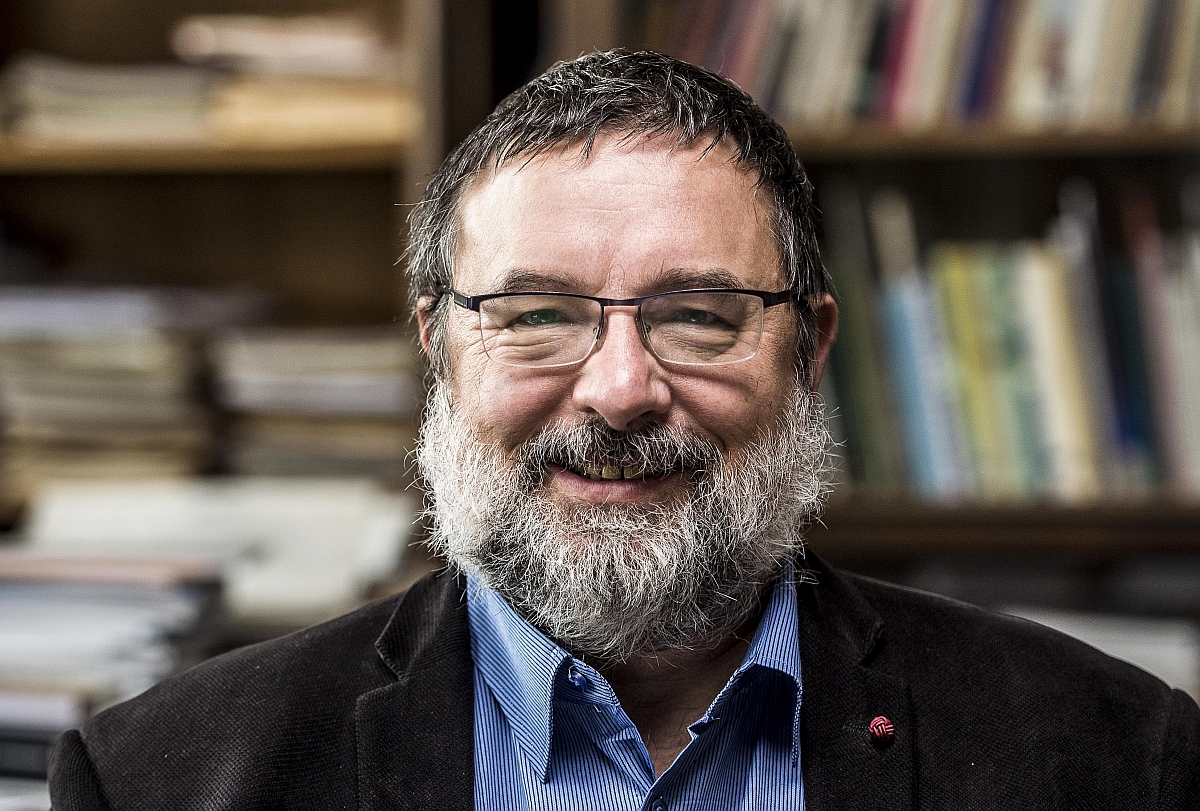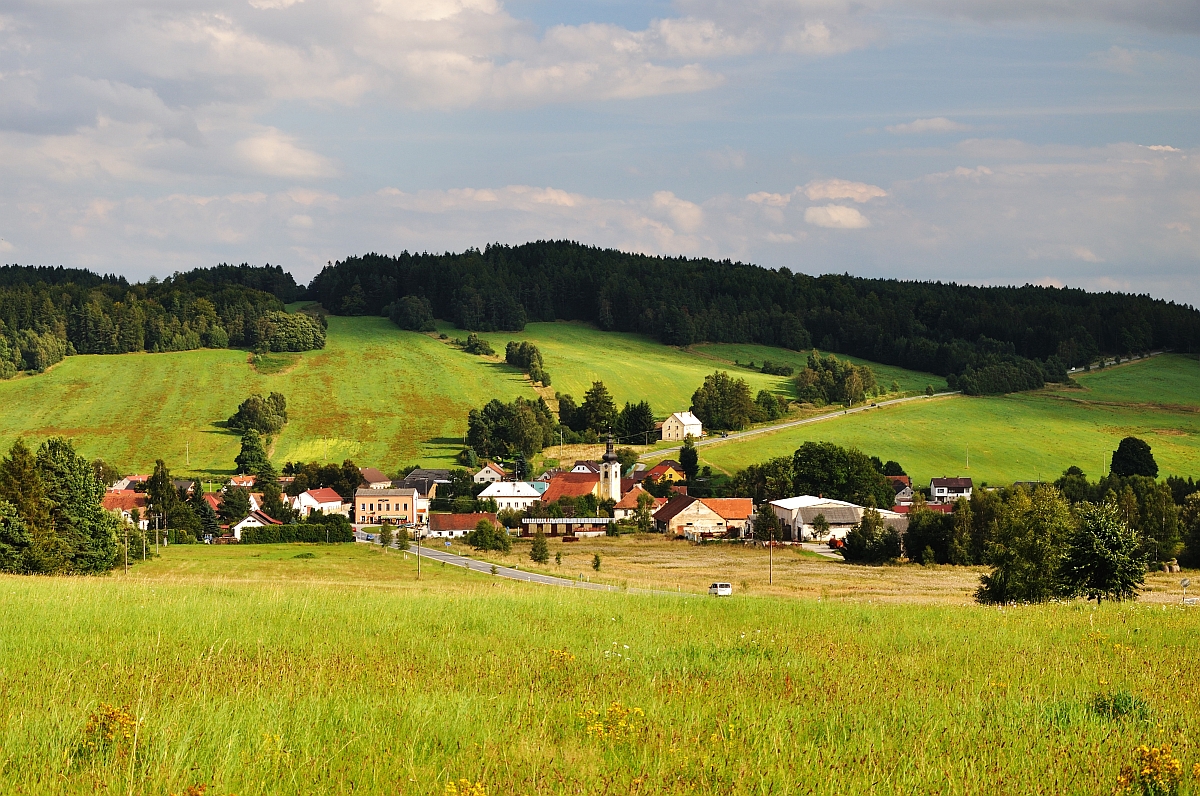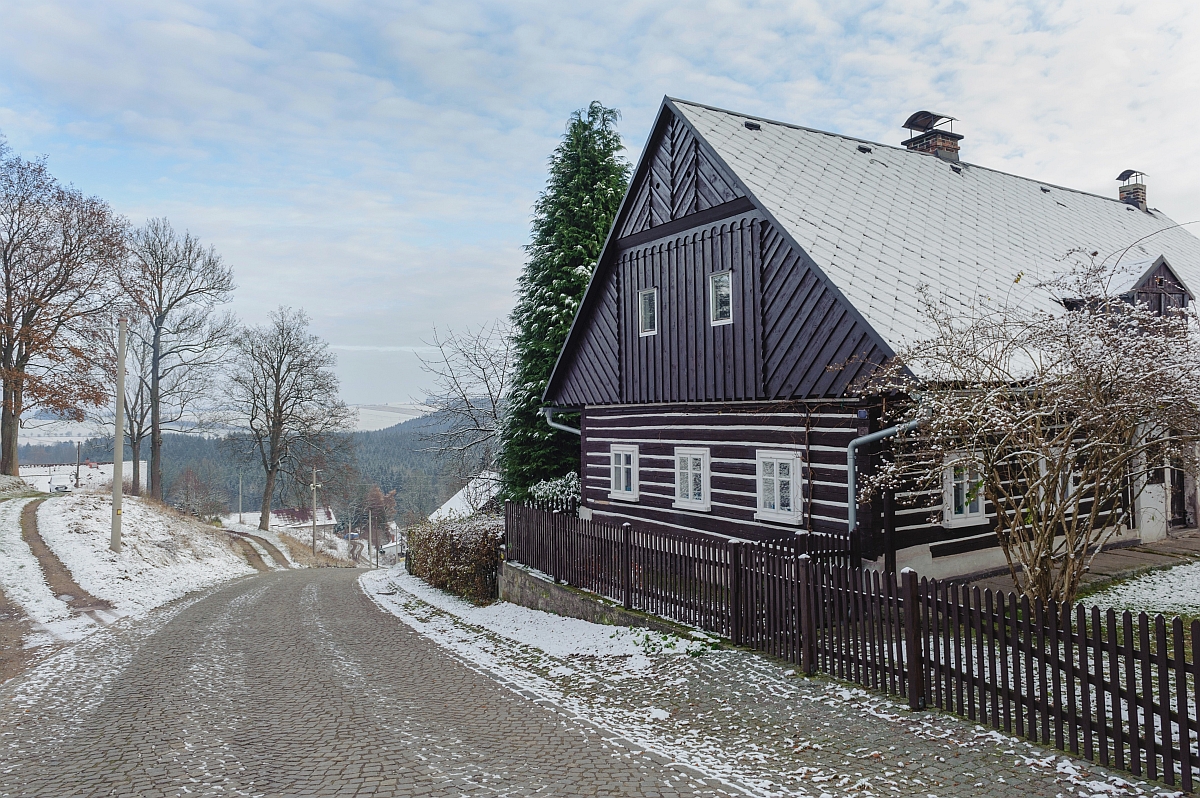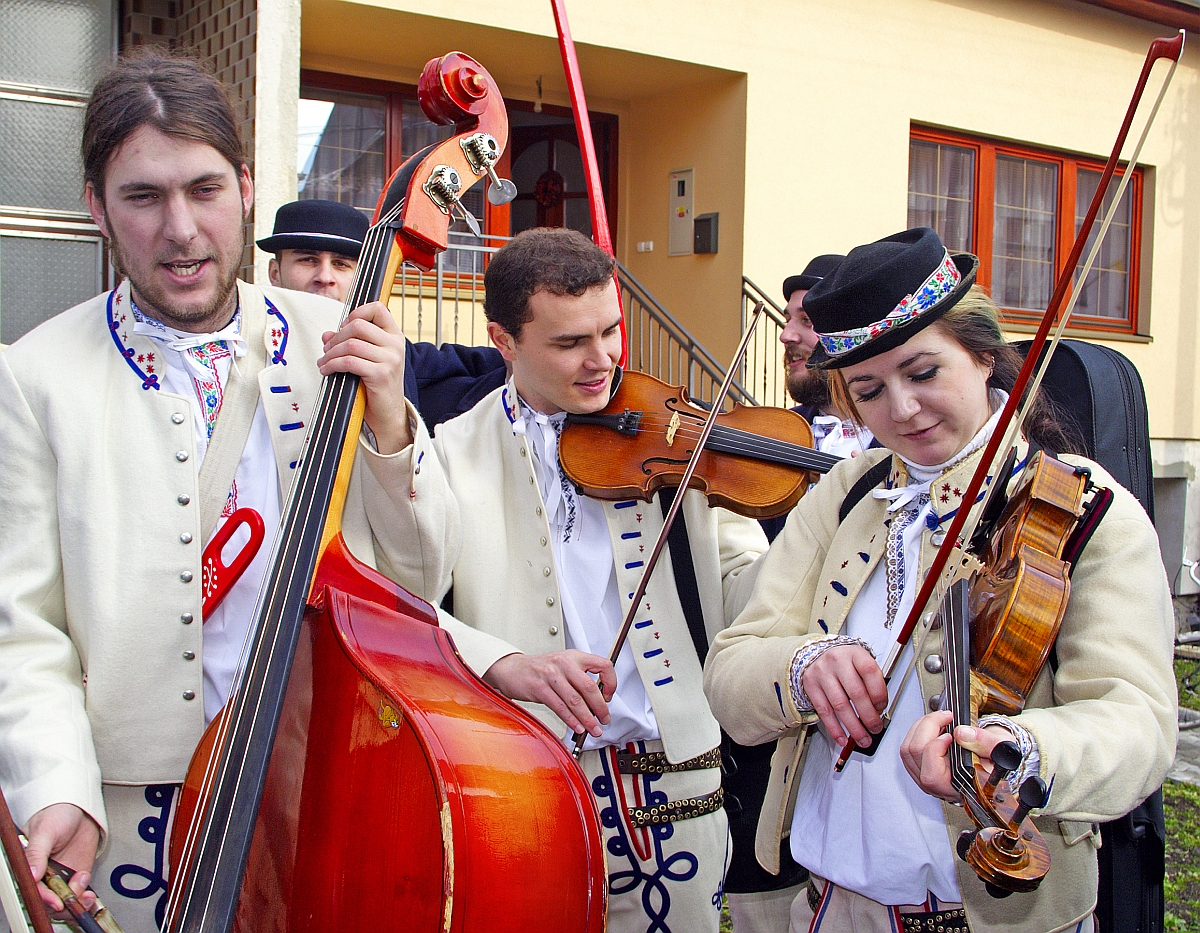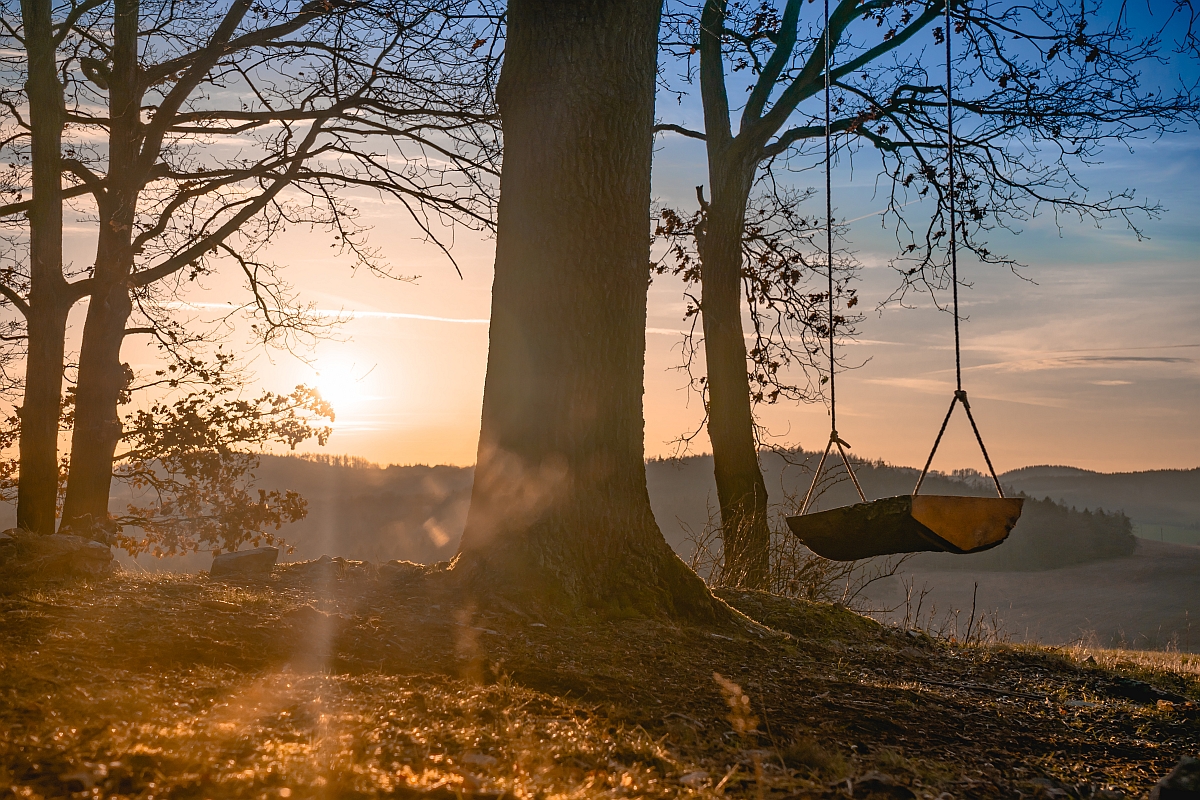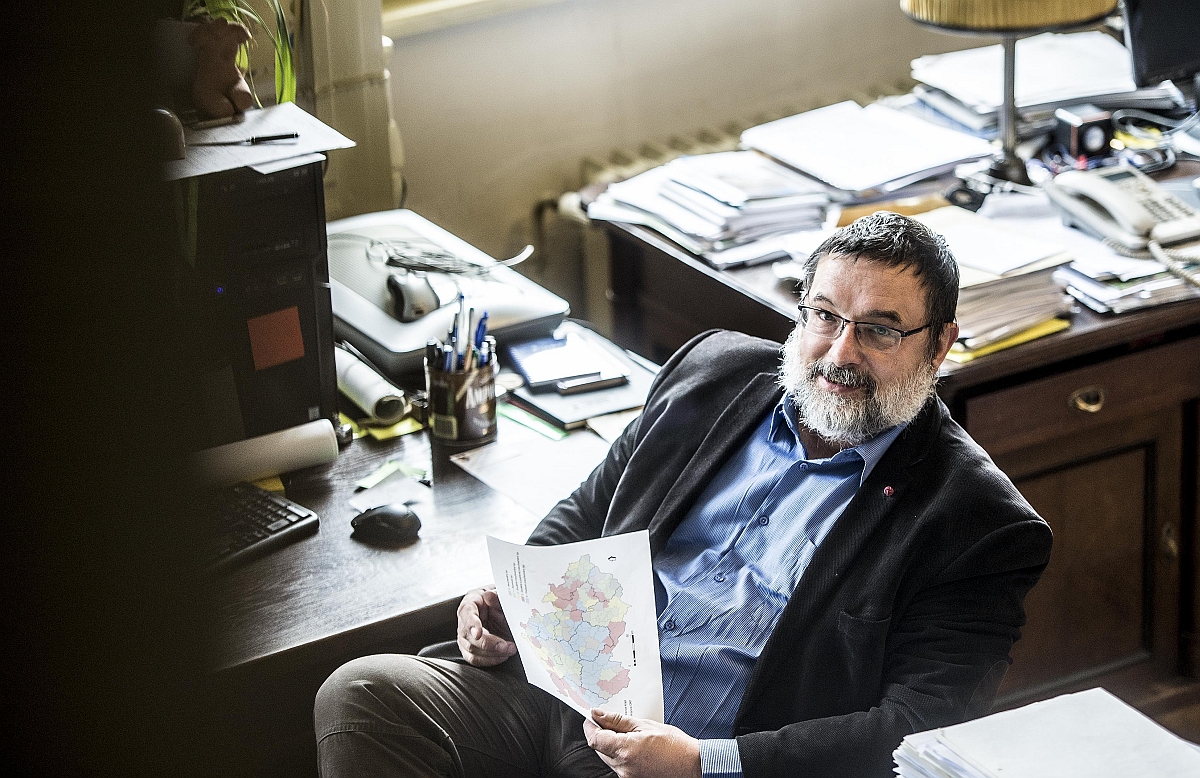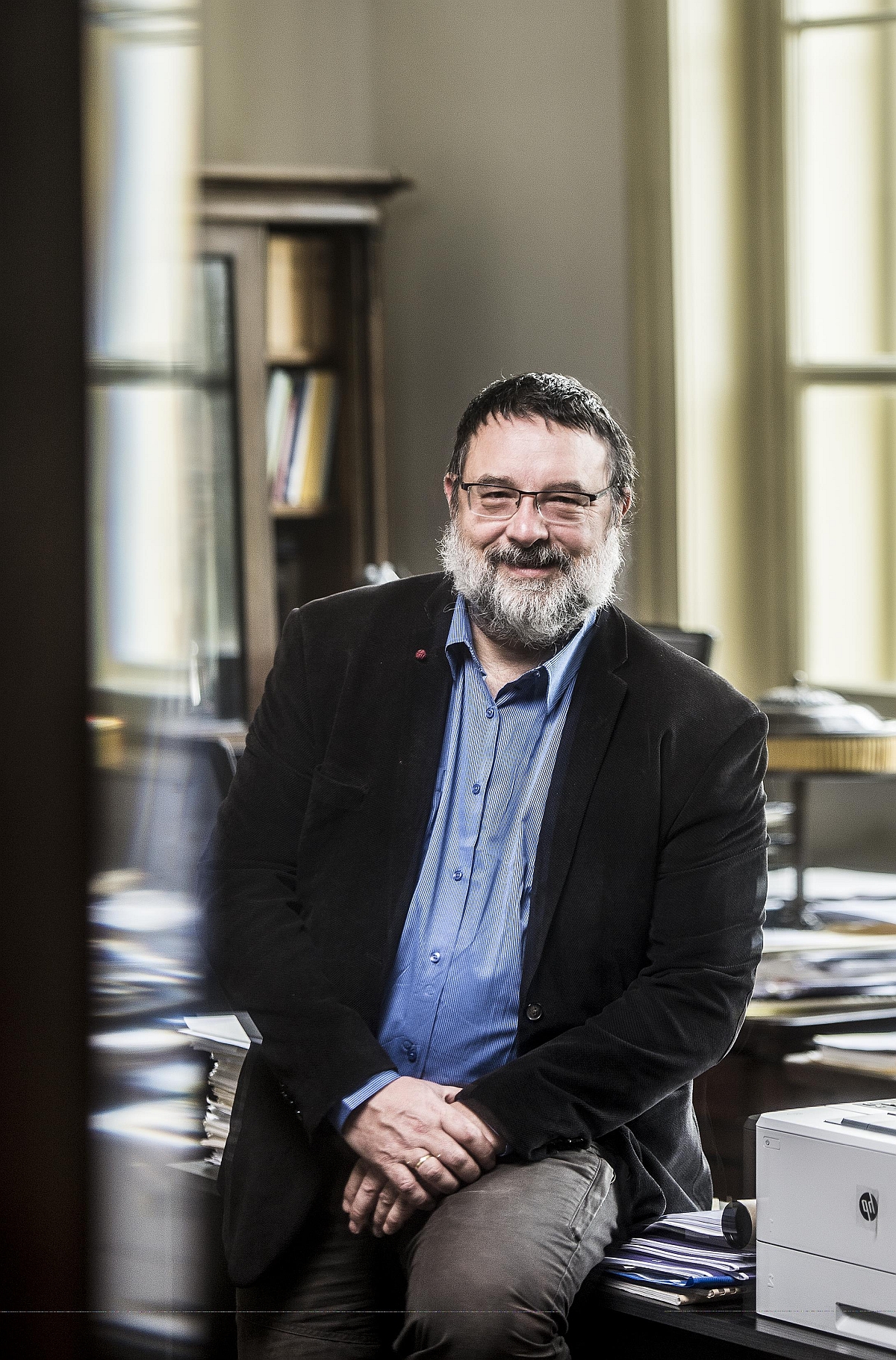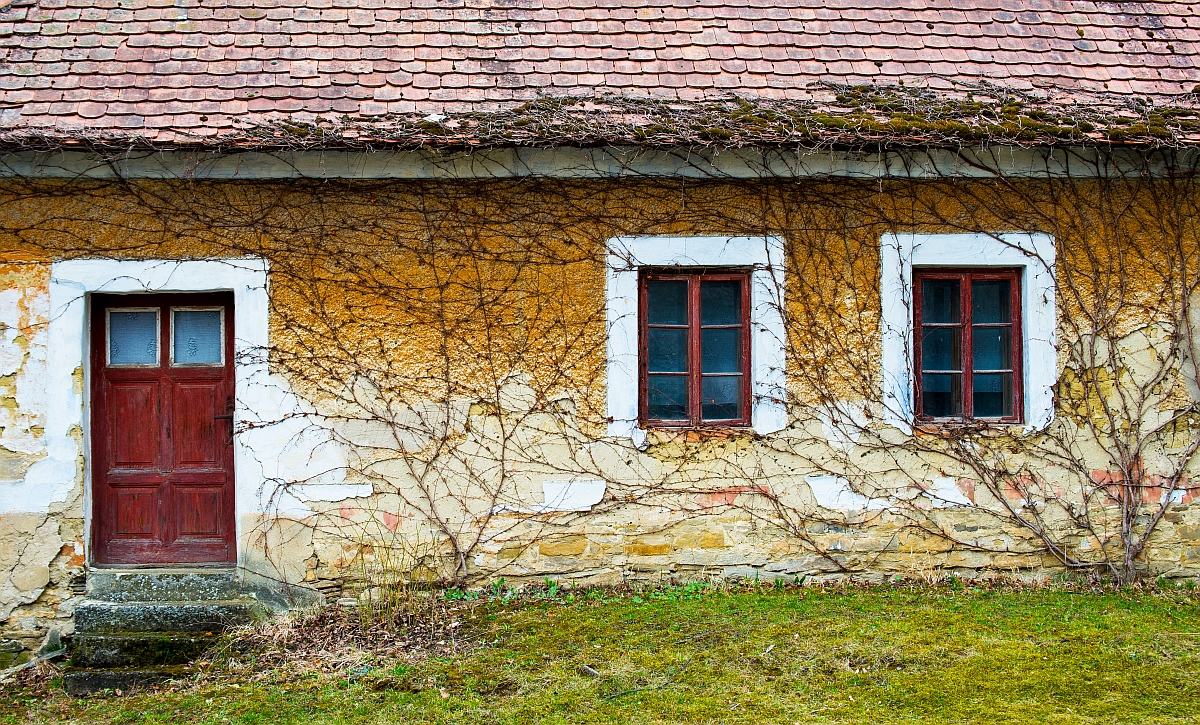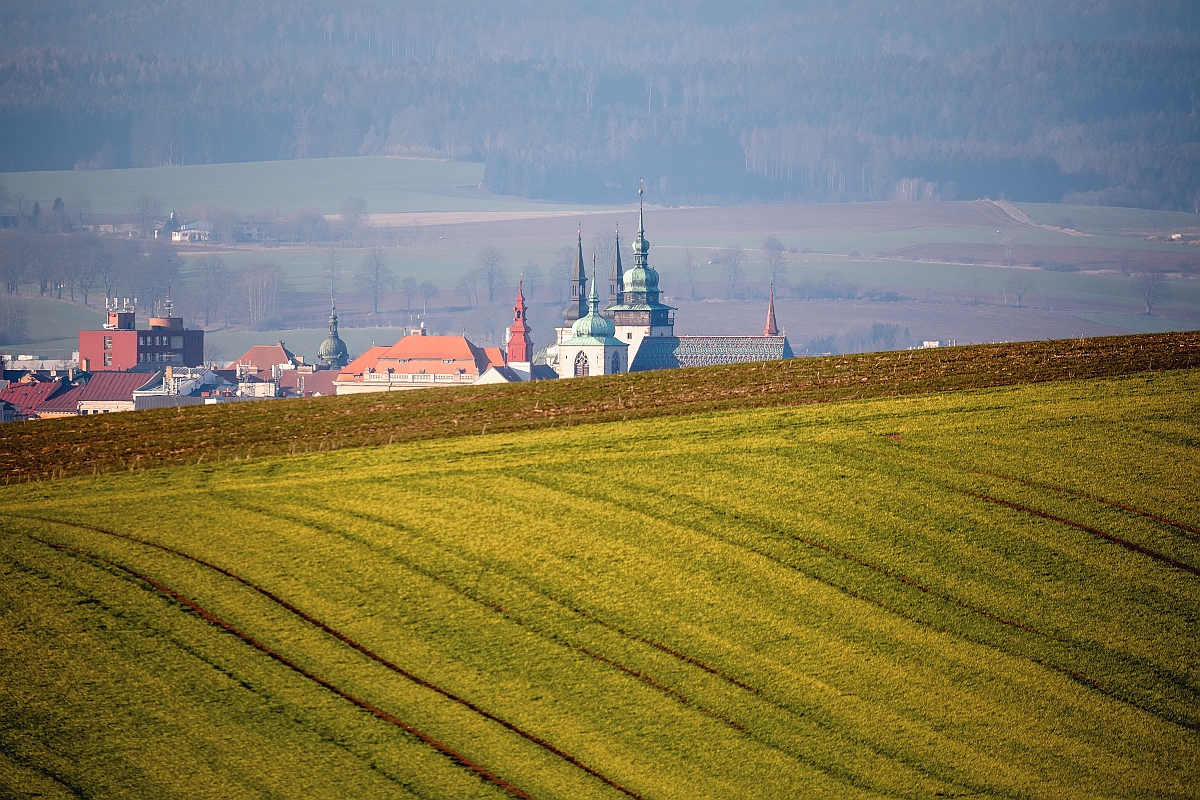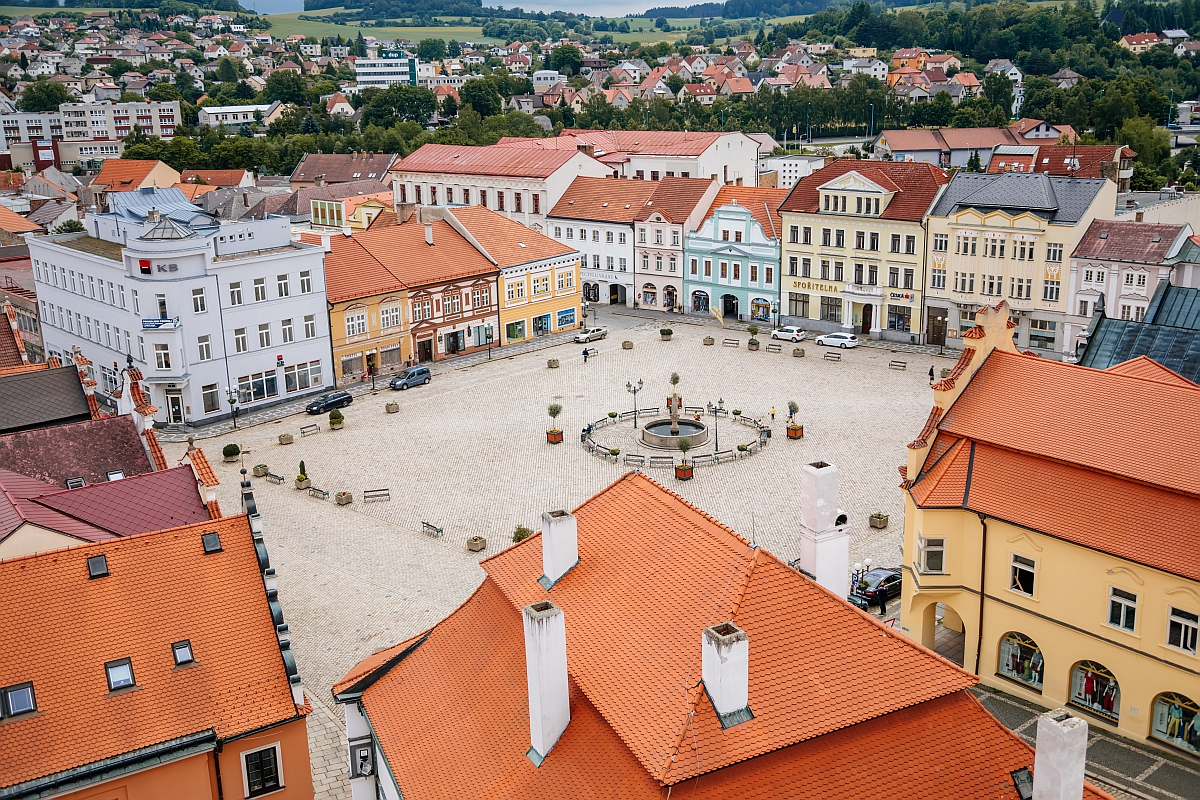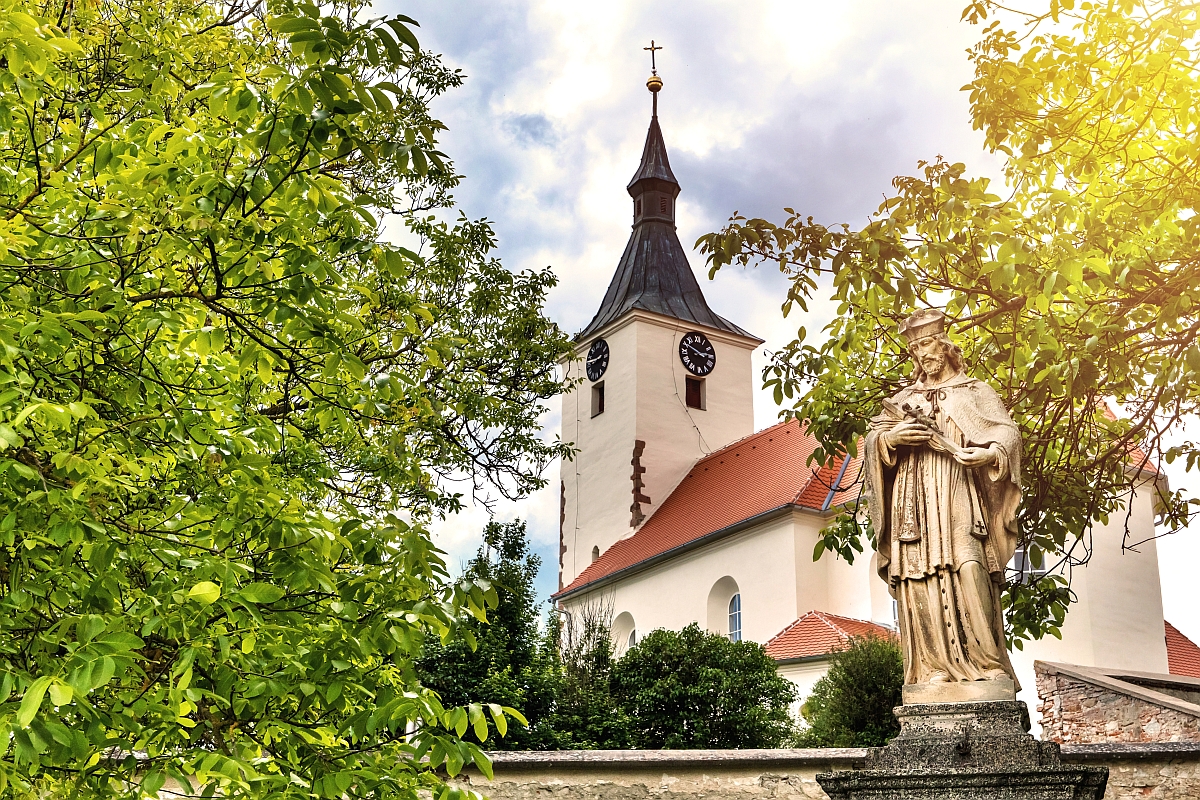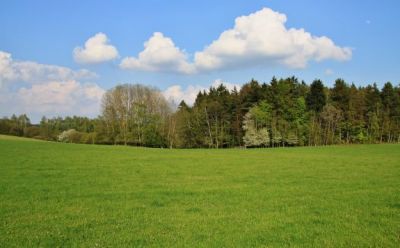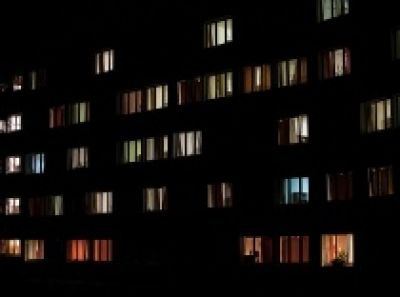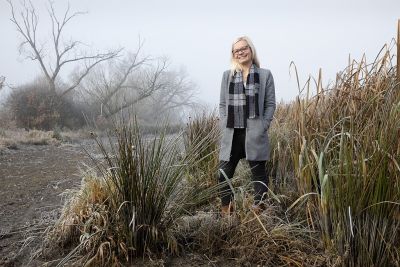Last February saw the cancellation of Venkov 2021 = Rural 2021 due to the pandemic. The popular conference hosted annually by the Department of Social Geography and Regional Development at Charles University’s Faculty of Science and organised by Dr. Radim Perlín, has always been an opportunity for regional stakeholders to connect with researchers and government planners, as well as to take part in important debate. Now in its 14th year, the conference returned a few weeks ago, although with Covid cases at the time running high, it was a question whether anyone would meet face-to-face.
Radim Perlín told Forum more.
When we began to plan Venkov 2022 it was still a huge question whether we would be able to hold the seminar at all. Preparations began late last year but of course at that time there it was difficult to predict what the pandemic situation would be. [The number of Covid-19 cases was still going up, omicron had not yet spread in Czechia and there were still questions about how it would affect both individuals and the health care system – ed. note]. We knew that we wanted to do it because last year we had to cancel the event because social contact, meeting together and the overall atmosphere is very important. We opted to organise it as a hybrid event just in case, partly in person at the faculty and partly online. That proved to be a good decision.
To what degree was the pandemic and its impact on Czech rural life a topic of presentations themselves?
It was not the main topic of the presentations but it was the main topic of the panel discussion we held in the second half of the conference: those who had presented findings in the morning discussed the situation and there were questions from attendees in the auditorium as well. Many of course were interested in what would happen after the Covid situation…
At the same time, some of the presentations did react to developments over the last two years such as a presentation by Robert Bargel of NIPOS (The National Information and Consulting Centre for Culture). NIPOS conducted research during the first half of the pandemic in July – September 2020, between the first and second waves. At that time, cultural life was relatively open [Many observers thought, initially, that the pandemic would subside as cases dropped to negligible numbers but Covid would roar back in September and October 2020 as restrictions were lifted and students returned to school and employees to the workplace – ed. note]. There were few restrictions at the time and NIPOS polled cultural event organisers in two of the country’s regions: Central Bohemia and Olomouc. Researchers asked how they had been affected, how they reacted to state support, how much employment had been affected and other factors.
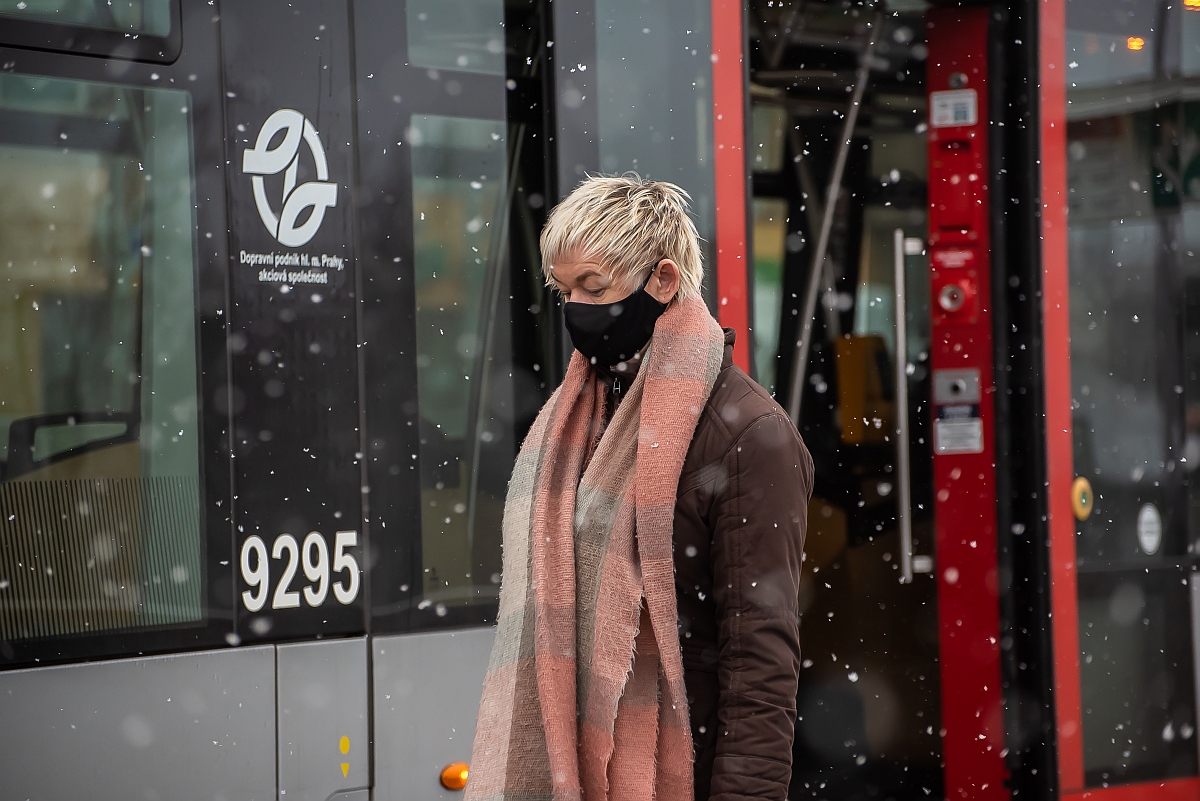
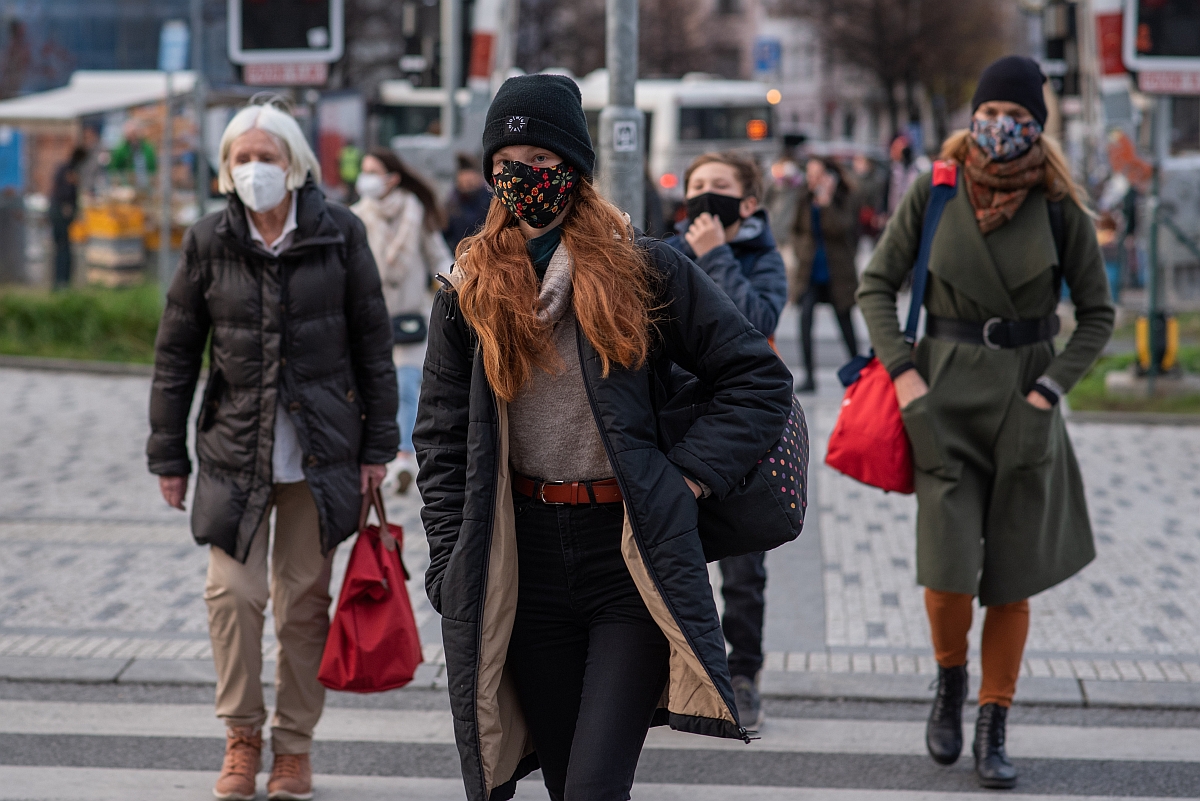
Covid winter, covid spring: In 2021 Czechs still wore masks outside and saw lockdowns and many more restrictions - 2022 has been different..
Impact on culture
During the pandemic, it was evident that many involved in the cultural sphere were hard hit. One example would be film distribution and theatres, as cinemas were closed or faced heavy restrictions.
It’s not possible to speak about culture as a whole but in sections. On one side, you had entrepreneurs, like in the film business or festival organisers and promoters and their staff – from musicians to stagehands and technical support. And these, in the latter group, found themselves in a very bad situation. For them, the period was very, very difficult. On the other side of the cultural spectrum were institutions such as museums or municipal libraries, financed from the state budget or municipal budgets, and their situation was relatively stabilised. It wasn’t as hard for them to prepare new projects, to transfer exhibitions online, to organise online events, and many other activities. They were able to prepare new events and some were more active while others were not as much.
Events that were transient, the people must have been much more nervous because they almost didn’t know what would happen one minute from the next.
The impact also wasn’t about the biggest events but rather smaller ones in smaller municipalities and microregions, where events are often organised by local museums or organisations. Some of these went ahead and were relatively going on, but others were hard hit. These were small groups of people organising small festivals, such as folk music, and you usually have a lot of volunteers connected with that. That kind of volunteering is not about money, it’s about interest: if you spoke these activities for two or three years than you can expect those volunteers to disappear relatively quickly. They become less active and that has an effect.
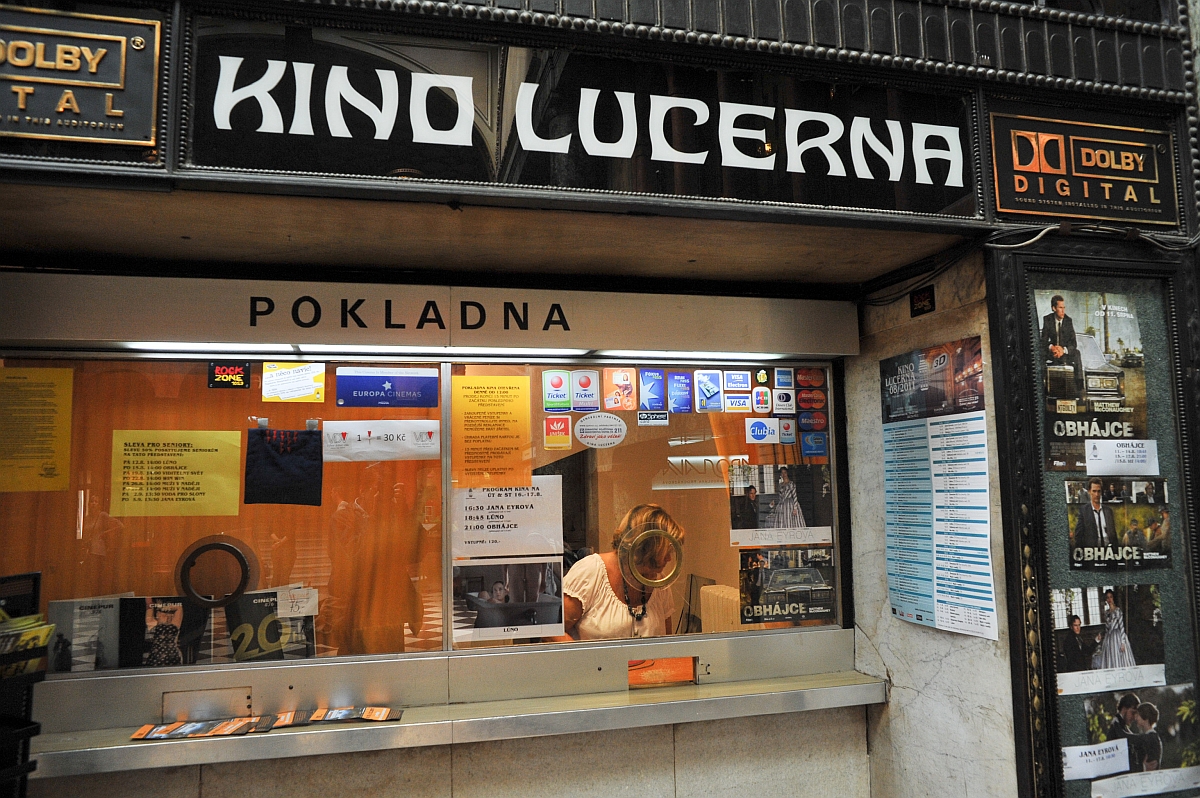
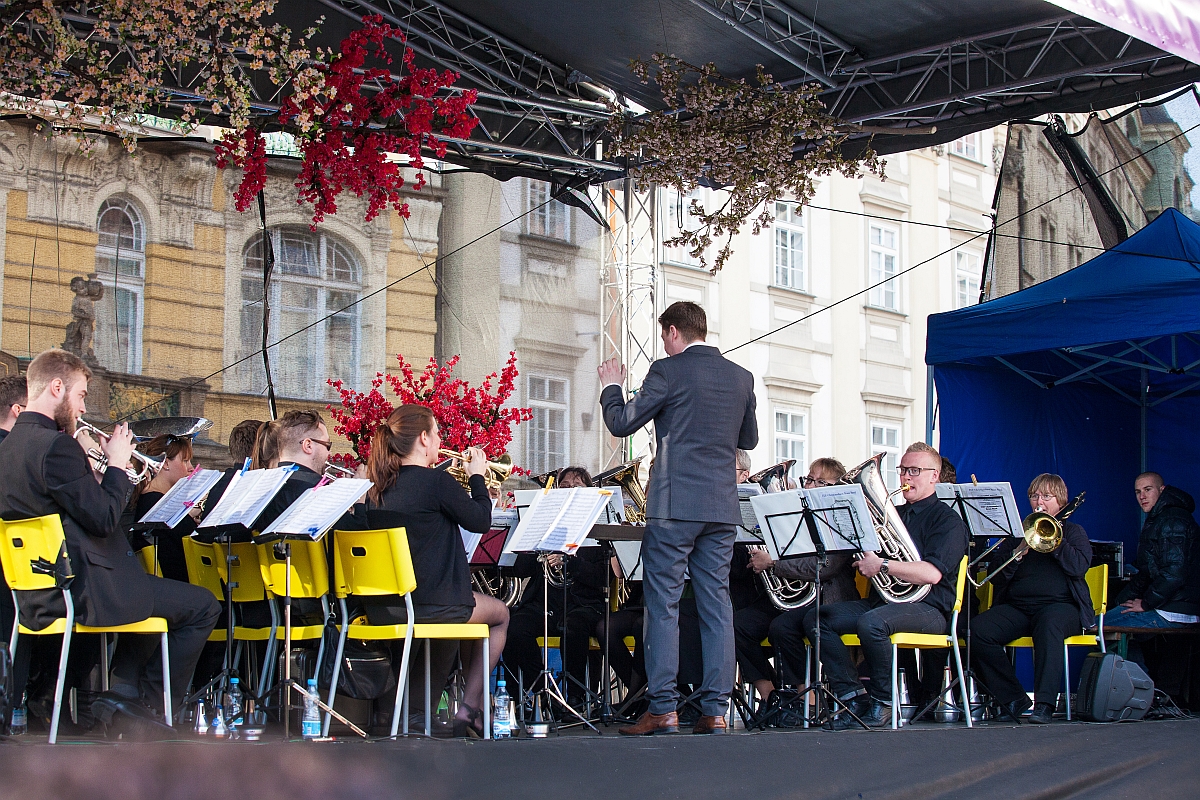
Cultural life: Smaller venues, one-off events, smaller festivals with fewer groups of volunteers suffered more during Covid, says CU's Radim Perlín.
The fact that something with maybe a small but important tradition was stopped for public safety reasons led to frustration I am sure. People missed local cultural life, others lost work and – coupled with periods of being isolated at home – it was a frustrating time.
If you have one or two head organisers you can have a group of 20 volunteers who play an important role. And when you lose them, the whole thing disappears. What was significant about this research was that the people who promote those kinds of festivals were angered on behalf of their volunteers [whom they were unsure they could offer work].
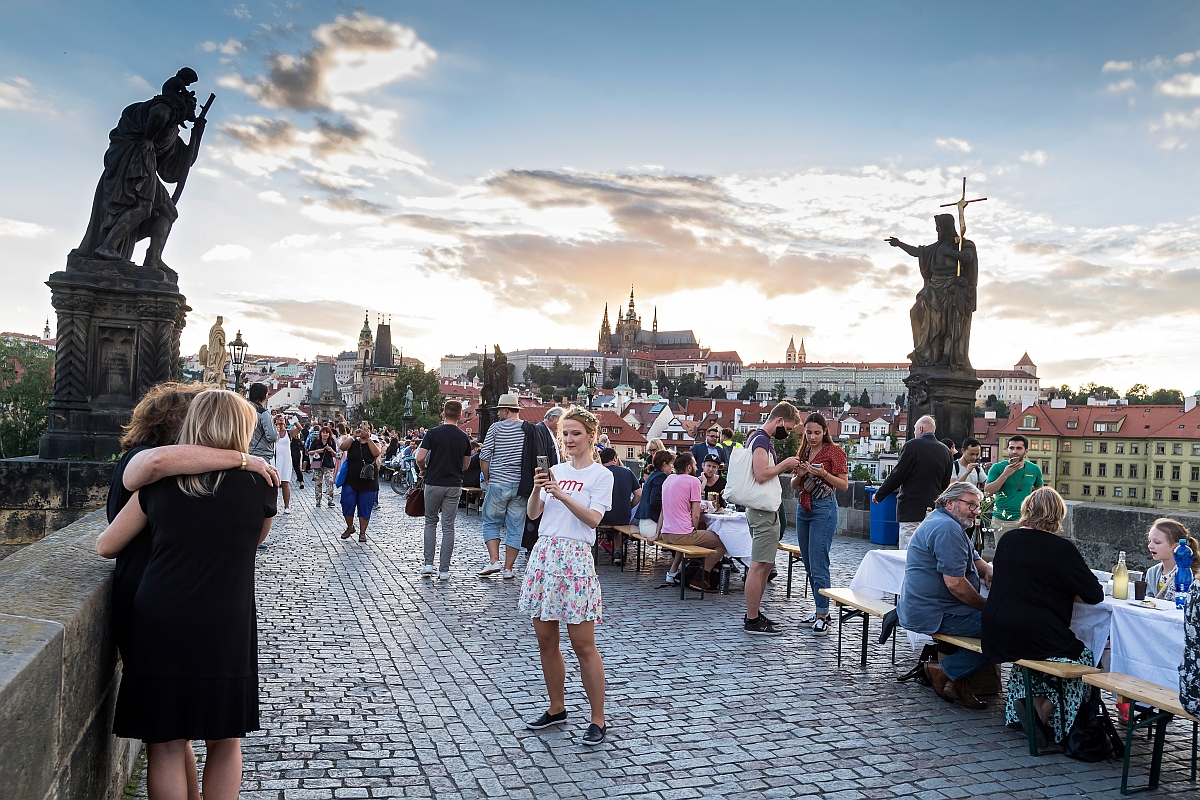
A now famous shared lunch on Charles Bridge in June 2020 celebrated the 'end' of the pandemic. It made world headlines. But it was too soon.
Microregional branding
Venkov 2022 looked at other aspects of rural life perhaps less affected by the last two years, one of them being the issue of branding of microregions that you mentioned. Was this kind of branding also affected?
That’s not easy to answer. Many of my colleagues who work or study the branding system as implemented say in Czechia we actually have overbranding. We have a lot of brands: some are regional, some are focused more on microregions, and then you have brands connected with quality, like the Czech klasa as a guarantee of good quality. In her presentation, Magda Fialová focused on regional as opposed to state brands and showed that individual cases were connected to individual brand managers or brand management. If you had a manager who was active, positive, well-known and with good know-how, they were able to bring people together and drive the brand.
Others did less and their success was more a dream than reality. In cases where managers were not proactive, the brand suffered and slowly began to fall. Covid showed the division or difference between the two groups and after the pandemic recedes it will be even more apparent which brands will survive within the framework of what is very well built system, and which will fail. Another critical aspect of microregional branding in general is whether locals identify with the brand. Sometimes microregions are [only on paper] and not really in the hearts and minds of locals. They might live there but feel no connection at all.
Let me give you an example, the branding of an area between two regions two district towns (Benešov in Central Bohemia and Tábor in South Bohemia) called Česká sibiř or Czech Siberia. In my view, the term Czech Siberia is seen as something fairly negative: Go to Czech Siberia! – that’s not very positive! And they changed the touristic brand to Toulava which means wandering or roaming [not least in local nature – ed. note]. They called themselves the microregion Toulava and they never use the original nickname and slowly they changed the minds of people. But we are talking about a period of 20 years, not something you can change from Monday to Friday. The change was conducted by local stakeholders who agreed on the name and I think it was very significant.
A tale of two villages
When we spoke in the past, I know you highlighted one of the fascinating aspects of social geography and regional development: the big question is why does one village in a region flourish while a neighbouring village fails.
I will start very generally: if we look at the rural countryside you can see two neighbouring villages side-by-side. In one, you have great cultural life, social activities, people like going living there and identify with the village; in the second village, to use a Czech idiom, the foxes wish you good night. What are the reasons one village is very active while the other is passive and nothing is ever completed? The answer is social activity: soft power, soft driving forces that make a difference. It is about peoples’ will to help, to cooperate in the village.
And culture and sport as well are activities that bring people together. If you bring them together, it doesn’t matter whether it is an amateur theatre group or musicians or a festival or other activities, they start to speak together, and there is a chance for friendships and partnerships to develop. As a result, that can lead people to cooperate on additional projects, to clean up a site, to renovate something and the village begins to have an active social life. Culture should, and very often does, bring people together and build the social atmosphere and what we call the social network and that’s important. That is the role of culture.
Identity
Within that you have local players who can also be decisive. A family where generations have served as local mayor and so on.
That’s right. To build these social networks several factors are important: you need social or individual human capital. Some people are just better in certain roles and can organise. You need leadership from people who are active, who want to lead but are also accepted as leaders (which is also very important). You can have someone who wants to lead but for one reason or another is not accepted; you can often see that also in political life, which is very similar. Identity is important, and if people are deeply connected to the local village or with the microregion, it makes a difference. Where they were born, have lived for a long time, have historical roots or remember events going back two, four or more years back – that all forms identity. If you have a strong identity, you are more likely to help and be of use to your local village and society.
Culture and sport are the basement [or ground floor from which to build up], where people meet but begin to discuss other possibilities. Not only in culture but also spreading into other spheres in village or rural life. That makes for areas that are more resilient. One of the conclusions from the panel discussion at Rural 2022 was that in rural areas after Covid there will be a deep differentiation between active and non-active – there will be a bigger difference between successful and unsuccessful microregions in rural areas. And that is a fairly serious problem.
At the same time there was [a silver lining] to the events of the last two years: some areas that were previously depopulated saw an influx of new inhabitants. High rents in cities coupled with the effects of the pandemic saw some people choosing to move to the countryside. People began asking about the price of plots of lands in more peripheral rural where they could build their own house, rather than stay in the city. High rents or the high cost of buying a flat in the city has led many to reconsider. We expect that to be a process that could help peripheral regions to stabilise and see a better trajectory and that is something that is relatively new. The pandemic showed the way because it showed that we could work from home or home office, that we could do many things online, that we could commute or drive to the city when necessary or once a week.
In the autumn, Charles University awarded an honorary doctorate to the Norwegian anthropologist Thomas Hylland Eriksen, who has written about the need to ‘slow down’ and said in an interview for Forum that the pandemic had let many people to reconsider what mattered in life and just what kind of lives they want to lead. At least the hard lockdowns that we went through were an opportunity to reassess, and that seems to segue with what you are saying. It is time for a ‘reset’.
Yes. A reset of individual values and individual lives. I absolutely agree. In my area of interest it is very difficult to promote those individual values within regional development. That is something that is not yet clear.
| Radim Perlín, Ph.D. |
| Radim Perlín, born in 1961 in Prague, is an expert in the fields of social geography and regional development at the Faculty of Science at Prague’s Albertov. He is especially interested in urban space and town planning as well as organised planning by the state. He is one of the main organisers of the annual Venkov (Rural) conference, bringing together government as well as municipal representatives, the private sector, cultural institutions and individual researchers, to focus on issues pertaining to rural life. |


